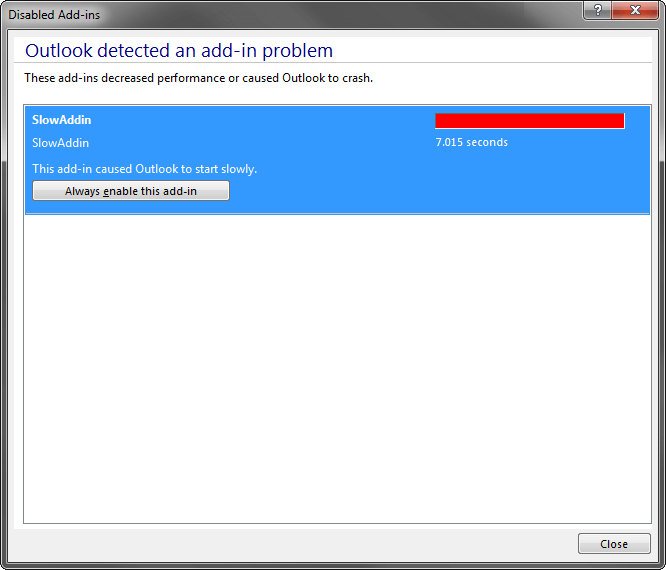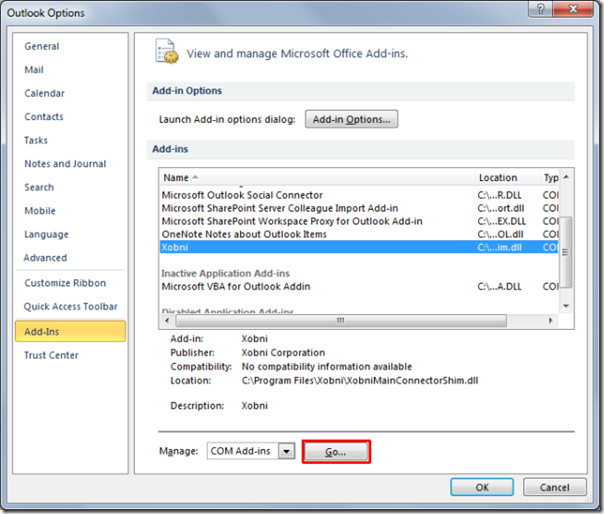

It includes Classic Menu for Word, Excel, PowerPoint, Access, Outlook, OneNote, Publisher, InfoPath, Visio and Project 2010, 2013, 2016, 2019 and 365.

3).īrings the familiar classic menus and toolbars back to Microsoft Office 2007, 2010, 2013, 2016, 2019 and 365, helps users get through the transition from Office 2003 (or 2002, 2000) to Office 2007, 2010 or 2013, and saves your money and energy on training if you are upgrading your Office. At the bottom of the window, ensure the Manage drop-down has COM Add-ins selected, then select.
After clicking the Properties button in the middle section, it shows the Message Options dialog box. Outlook: Enable/Disable Add-ins Select File > Options. Click on Modify, and uncheck the currently checked locations. Click on Search tab in the left pane and then choose Indexing Options. Click on File in the upper left corner and then choose Options. 
Click the File tab, and get into Outlook's backstage view Solution 2: Rebuilding Microsoft Outlook’s Search Index Manually.There is another method to find out the Message Options command in Outlook 2007, 2010, 2013, 2016, 2019 and 365 without Classic Menu.

Method 3: Find out Message Options in Outlook 2007/2010/2013/2016/2019 Backstage view After clicking the button at the lower-right corner, it shows the Message Options dialog box.Go to the Tags group under Message tab.If you do not have Classic Menu for Office, this method will guide you to find out the Message Options command in Outlook 2007/2010/2013's Ribbon. Classic Menu makes it possible for you to work in Outlook 2007, 2010, 2013, 2016, 2019 and 365 as they ware Outlook 2003. 1: Message Options with Classic Menu for OfficeĬlassic Menu for Office is designed to restore Office 2003's old menus and toolbars in Microsoft Office 2007/2010/2013. Then you will see the Message Option item in the drop down list.If you have Classic Menu for Office installed, you can find out the Message Options command with the same way that you did in Outlook 2003. Method 1: Easily find out Message Options with Classic Menu Classic Menu for Office Home and Business.Classic Menu for Office 2007 Applications.Once this is complete, re-open your Add-ins menu and follow the steps for manually enabling the plugin once more.
CANNOT ENABLE ADD IN OUTLOOK 2010 INSTALL
Install and Set Up Salesforce for Outlook Add Microsoft Outlook Emails to.
Next, in the Disabled Items menu, choose, then select Enable. A room list is a special type of Exchange 2010 distribution group that. To do so, change the Manage dropdown menu from COM Add-ins to Disabled Items, then click Go. If the above steps are not successful, your plugin may have been disabled. Note: If you are running a 64-bit version of Outlook, select. Navigate to C:\Users\ \AppData\Local\Citrix\Citrix Files for Outlook and select. After removing or if the ShareFile Outlook Plug-in does not appear on the list, click Add…. If the plugin authentication does not start automatically, continue with these steps. Check the box next to the Citrix Files for Outlook if it is not done so already. Click Add-ins then click COM Add-ins button towards the bottom of the screen. If the above steps do not resolve your issue, please contact Citrix Support. Once this is complete, re-open your Add-ins menu and check the box beside Citrix Files for Outlook. Check Skype meeting Add-in for Microsoft Office 2013. If the above steps are not successful, your plugin may have been disabled. In the Add-Ins menu, change the Manage dropdown menu from COM Add-ins to Disabled Items, then click Go. File > Options > Add-ins Under Manage: Com Add-Ins and click on Go On COM Add-Ins page. If the plugin authentication does not start, please close and reopen Outlook. Open Outlook and select File > Options > Add-Ins Ensure that Evernote Outlook Contact Connector and Evernote.Outlook are both checked under Active. Click OK twice to close the open dialog boxes. If using a per-machine version of the OLP, you can locate the Plugin files at C:\Program Files (or x86)\Citrix. Navigate to C:\Users\ \AppData\Local\Citrix\Citrix Files for Outlook and select . If you are running a 64-bit version of Outlook, select. After removing or if the Citrix Files for Outlook does not appear on the list, click Add…. If the box was already checked or if the authentication did not start automatically, select the Citrix Files for Outlook and click the Remove button. If the plugin authentication does not start automatically, continue to the next steps. One Exchange 2010 server, running on Svr2008R2Ent, all roles and external smart host. On the COM Add-Ins screen, check the box next to the Citrix Files for Outlook if it is not done so already. Midway through a migration pilot project (not the production servers) and the Outlook 2010 users cannot connect to the new Exchange 2016 server, even though OWA on that server works ok. Click Add-ins, then Go… next to Manage COM Add-ins.








 0 kommentar(er)
0 kommentar(er)
